Questions with Answers, Solution | Numbers | Chapter 1 | 8th Maths - Exercise 1.4 (Square Root) | 8th Maths : Chapter 1 : Numbers
Chapter: 8th Maths : Chapter 1 : Numbers
Exercise 1.4 (Square Root)
Exercise 1.4
1. Fill in the blanks:
(i) The ones
digit in the square of 77 is___________.
(ii) The
number of non-square numbers between 242 and 252 is ______.
(iii) The
number of perfect square numbers between 300 and 500 is ______.
(iv) If a
number has 5 or 6 digits in it, then its square root will have ___________ digits.
(v) The value
of √180 lies between integers ______ and ______.
2. Say True or False:
(i) When
a square number ends in 6, its square root will have 6 in the unit’s place.
(ii) A square
number will not have odd number of zeros at the end.
(iii) The
number of zeros in the square of 91000 is 9.
(iv) The
square of 75 is 4925.
(v) The square
root of 225 is 15.
3. Find the square of the following numbers.
(i) 17 (ii) 203 (iii) 1098
Solution:

4. Examine if each of the following is
a perfect square.
(i) 725 (ii) 190 (iii) 841 (iv) 1089
(i) 725 (ii) 190 (iii) 841 (iv) 1089
Solution:
(i) 725
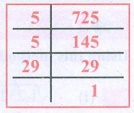
725 = 5 × 5 × 29 = 52 × 29
Here the second prime factor 29 does not have a pair.
Hence 725 is not a perfect square number.
(ii) 190

190 = 2 × 5 × 19
Here the factors 2, 5 and 9 does not have pairs.
Hence 190 is not a perfect square number.
(iii) 841
841 = 29 × 29
Hence 841 is a perfect square
(iv) 1089

1089 = 3 × 3 × 11 × 11
1089 = 32 × 112
√1089 = 3 × 11 = 33
Hence 1089 is a perfect square
5. Find the square root by prime factorisation
method.
(i) 144 (ii) 256 (iii) 784 (iv) 1156 (v) 4761 (vi) 9025
Solution:
(i) 144
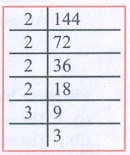
144 = 2 × 2 × 2 × 2 × 3 × 3
√l44 = 2 × 2 × 3 = 12
(ii) 256
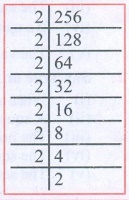
256 = 2 × 2 × 2 × 2 × 2 × 2 × 2 × 2
√256 = 2 × 2 × 2 × 2 = 16
(iii) 784
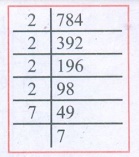
784 = 2 × 2 × 2 × 2 × 7 × 7
√784 = 2 × 2 × 2 × 2 × 7 × 7 = 28
(iv) 1156

1156 = 2 × 2 × 17 × 17
1156 = 22 × 172
1156 = (2 × 17)2
∴ √1156 = √(2 × l7)2 = 2 × 17 = 34
√1156 = 34
(v) 4761
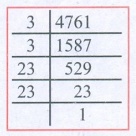
4761 = 3 × 3 × 23 × 23
4761 = 32 × 232
4761 = (3 × 23)2
√4761 = √(3 × 23)2
√4761 = 3 × 23
√4761 = 69
(vi) 9025
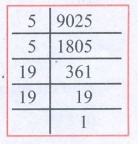
9025 = 5 × 5 × 19 × 19
9025 = 52 × 192
9025 = (5 × 19)2
√925 = = √ (5 × 19)2 = 5 × 19 = 95
6. Find the square root by long division method.
(i) 1764 (ii) 6889 (iii) 11025 (iv) 17956 (v) 418609
Solution:
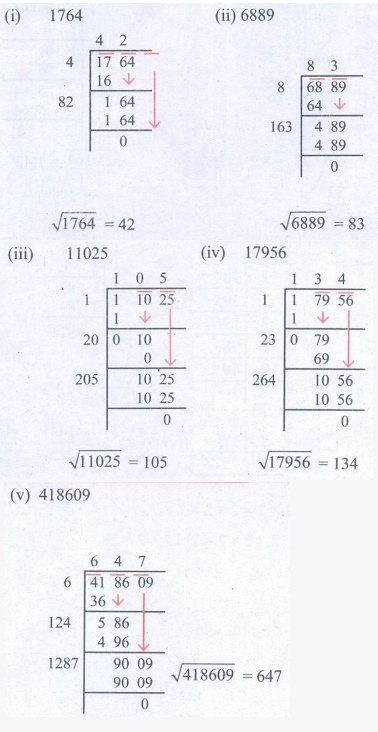
7. Estimate the value of the following square roots to the nearest whole
number:
(i) √440 (ii) √800 (iii) √1020
Solution:
(i) √440
We have 202 = 400
212 = 441
∴ √440 ≃ 21
(ii) √800
We have 282 = 784
292 = 841
∴ √800 ≃ 28
(iii) √1020
We have 312 = 961
322 = 1024
∴ √1020 ≃ 32.
8. Find the square root of the following decimal numbers and fractions.
(i) 2.89 (ii) 67.24 (iii) 2.0164 (iv) 144/225 (v) ![]()
Solution:
(i) 2.89
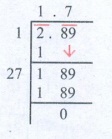
√2.89 = 1.7
(ii) 67.24

√67.24 = 8.2
(iii) 2.0164
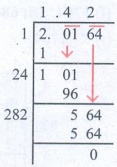
√2.0164 = 1.42
(iv) 144/225 = √[144/225] = 12/15
(v) 7 (18/49) = √[361/49] = √361/√49 = √192/√72 =19/7
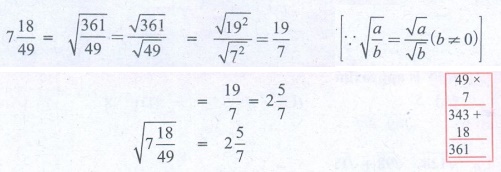
9. Find the least number that must be subtracted to 6666 so that it becomes
a perfect square. Also, find the square root of the perfect square thus obtained.
Solution:
Let us work out the process of finding the square root of 6666
by long division method.
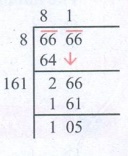
The remainder in the last step is 105. Is if 105 be subtracted
from the given number the remainder will be zero and the new number will be a
perfect square.
∴ The required number is 105. The square number is 6666 − 105 =
6561.
∴ √6561 = 81
10. Find the least number by which 1800 should be multiplied so that it becomes
a perfect square. Also, find the square root of the perfect square thus obtained.
Solution:
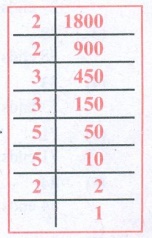
We find 1800 = 2 × 2 × 3 × 3 × 5 × 5 × 2
= 22 × 32 × 52 × 2
Here the last factor 2 has no pair. So if we multiply
1800 by 2, then the number becomes a perfect square.
∴ 1800 × 2 = 3600 is the required perfect square number.
∴ 3600 = 1800 × 2
3600 = 22 × 32 × 52 × 2 × 2
3600 = 22 × 32 × 52 × 22
= (2 × 3 × 5 × 2)2
√3600 = √(2 × 3 × 5 × 2)2
= 2 × 3 × 5 × 2 = 60
∴ √3600 = 60.
Objective
Type Questions
11. The square of 43 ends with the digit ______.
(A) 9
(B) 6
(C) 4
(D) 3
[Answer: (A) 9]
Solution: Ones
digit = 3 × 3 = 9
12. _______ is added to 242 to get 252.
(A) 42
(B) 52
(C) 62
(D) 72
[Answer: (A) 72]
Solution:
252 = 25 × 25 = 625
242 = 24 × 24 = 576
625 −576 = 49
49 = 72
13. √48 is approximately equal to ______.
(A) 5
(B) 6
(C) 7
(D) 8
[Answer: (C) 7]
Solution:
√49 = 7
14. √128 - √98 + √18 = ______.
(A) √2
(B) √8
(C) √48
(D) √32
[Answer: (D) √32]
15. The number of digits in the square root of 123454321 is ______.
(A) 4
(B) 5
(C) 6
(D) 7
[Answer: (B) 5]
Solution:
= [n + 1] / 2 = 10/2 = 5
Answer:
Exercise 1.4
1. (i) 9 (ii) 48 (iii)
5 (iv) 3 (v) 13, 14
2. (i) True (ii) True (iii)
False (iv) False (v) True
3. (i) 289 (ii) 41209 (iii)
1205604
4. (i) No (ii) No (iii)
Yes (iv) Yes
5. (i) 12 (ii) 16 (iii)
28 (iv) 34 (v) 69 (vi) 95
6. (i) 42 (ii) 83 (iii)
105 (iv) 134 (v) 647
7. (i) 21 (ii) 28 (iii)
32
8. (i) 1.7 (ii) 8.2 (iii)
1.42 (iv) 12/15 (v) 2 5/7
9. 105, 81 10. 2, 60
11. (A) 9
12. (D) 72
13. (C) 7
14. (D) √32
15. (B) 5
Related Topics